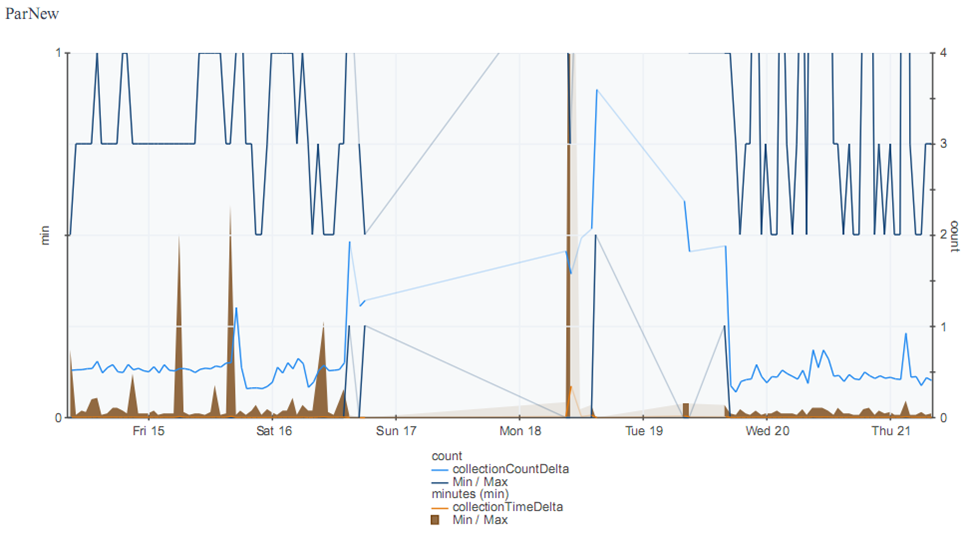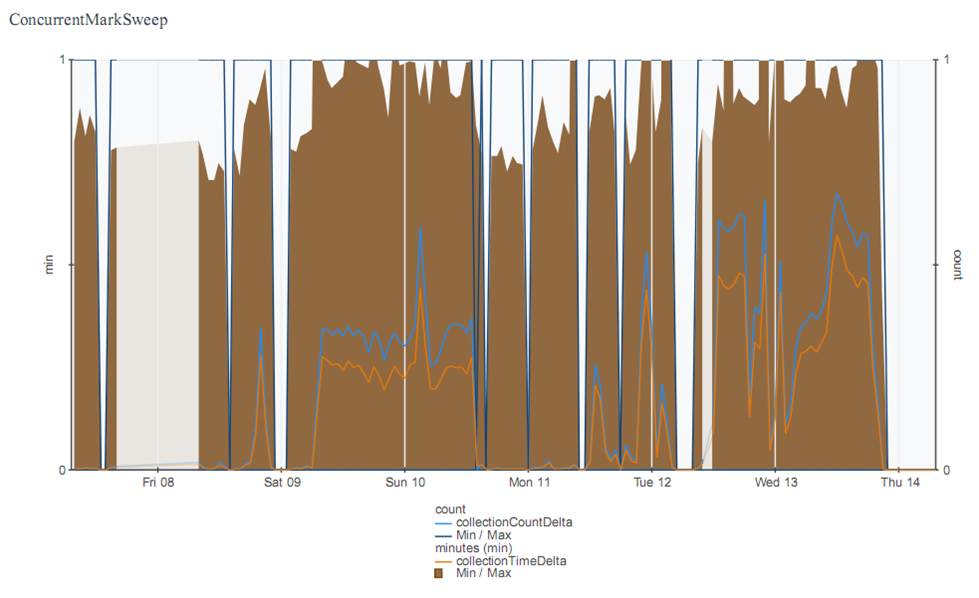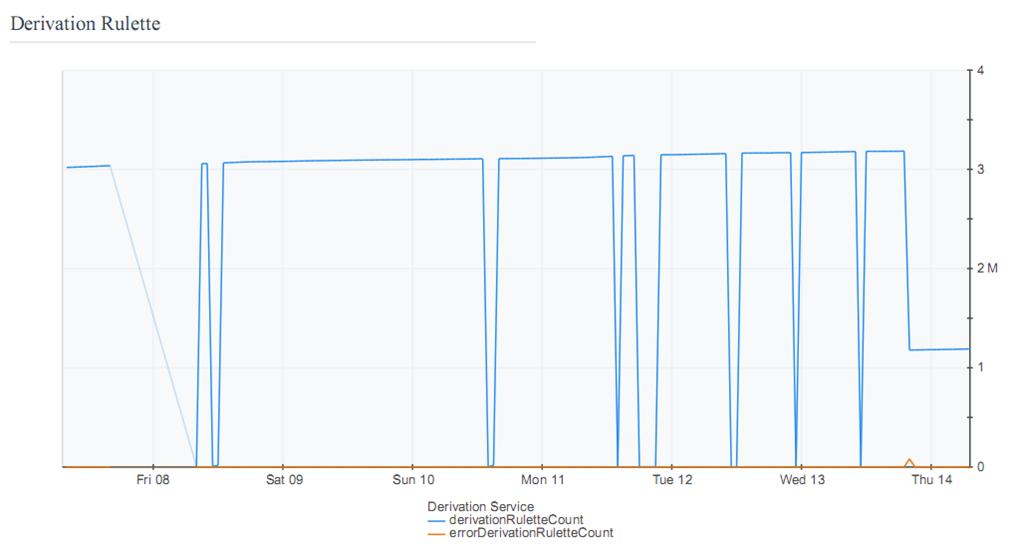Management Server Garbage Collectors
There are two types of garbage collectors:
|
1 |
ParNew—short and easy collections done in parallel, these have a low impact on the Foglight™ Management Server in normal operation. |
|
2 |
ConcurrentMarkSweep—long and time-consuming collections that cause the JVM to pause everything else. The Management Server can appear to “freeze” during these cycles. |
Examine the graphs for indications of issues.
The graph above indicates problems with the ParNew GC. The count (blue line) is up to 4, and the time (orange and brown) has increased to minutes.
The graph above indicates problems with the ConcurrentMarkSweep GC. The time (brown) has increased to minutes and the GC is called frequently.
These two graphs indicate the following issues:
|
Proper analysis of heap usage is necessary to ensure the root cause is resolved. |
JDBC Connection Pool
Keep this in mind while investigating other issues.
Derivation Rulette
Examine the count to determine whether there is an issue.
Examine the diagnostic snapshot to determine the source of the problematic rulettes.




